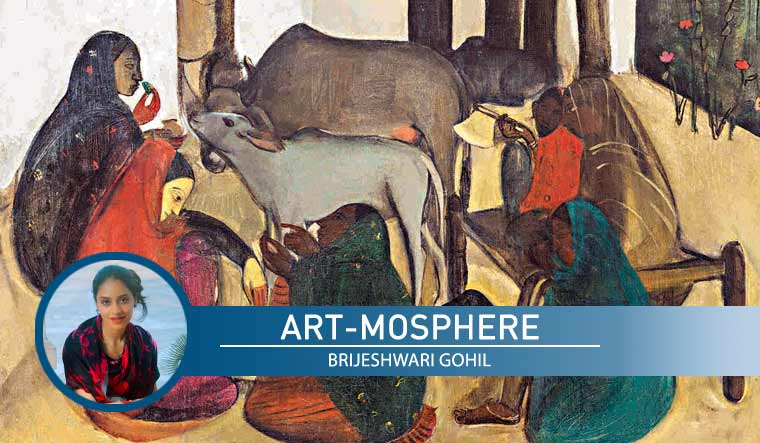There is a sudden worldwide boom of auction houses monetising on India’s modernists. The past few years have been nothing short of extraordinary for sales, with art prices scaling new heights and new records being set with each auction. The demand seems to be veering particularly towards the greats such as S.H. Raza, F.N. Souza, Amrita Sher-Gil, V.S. Gaitonde, that have, in recent times, gained global popularity. A new global record for F.N. Souza has been set at the recent Christie's auction, a perfect way to celebrate his centenary year. But the one common factor with all these names is that they fall into the category of modern Indian artists.
I’ve always found defining modernism a challenge, given the varied ways in which one can contextualise the term. Modernism can differ in art, architecture and in design. There have been chapters of the various modernist movements that have been logged and dated in the annals of history. Within Indian art history, there have been several small as well as large movements, eras when artists evolved as revolutionaries, breaking away from tradition and forging their own individual creative paths.
Collective movements further led to the formation of groups and associations such as the Bengal School of Art, the Calcutta Group, the Progressive Artists Group, to name a few.
Each of these groups had a noteworthy number of supremely talented artists. What I do find fascinating is the phenomenon that certain artists seem to be in extraordinary demand. It's almost like they are the “influencers” of Indian art.
Observing some of the major South Asian Modern Art auctions that have taken place over the past two weeks, I am even more fascinated.
I remember when I started working on the archives of costume designer Bhanu Athaiya during the pandemic in 2020. The estate of India’s first Oscar winner had recently been acquired by Prinseps. I had absolutely no idea that Bhanu, who I would soon grow to admire and respect more than I could have possibly imagined, was not only an acclaimed designer but also a supremely talented artist. Not just a gold medallist from the JJ School of Arts, but the only woman to be part of the popular Progressive Artist Group.
As a student of art history and a professional in the art and culture sector, I was disappointed by my own lack of knowledge. Never had her name come up in an auction that I was aware of, rarely was she mentioned in articles.
Reading about the Amrita Sher-Gil painting, The Story Teller, last September that sold for a whopping Rs 61.8 crore (the most expensive Indian art work ever sold) and now seeing the soaring prices of F.N. Souza in his centenary year, I did feel sad for Bhanu.
As the Christie's South Asian Modern and Contemporary Auction came to an end this week, I noticed a number of works by F.N. Souza from the 1980s (his later years) as well. Contrary to the 1950s, his so-called peak time as an artist, these works seem to be fresh and certainly in demand. Have we exhausted his works from the 50s to such a point of no return?
The star of the show was a 1960 painting titled ‘Lovers’, which sold at USD 4,890,000 (four times the asking price, just over Rs 40 crore) and set a new record for the artist.
The fact that this is Souza’s centenary year has obviously drawn a further demand for his works, while some of the other modern Indian artists seem to be simply having a “star” moment. Whatever the case may be, looking at these exciting surging prices does make me think of the many neglected artists.
Why do we not hear of any such artists globally? In a country as populated and talented as ours, there must have been many other greats, the unsung heroes. Are we not falling short of giving them their due? Many of whom may have directly or indirectly contributed to shaping the Indian art landscape?
It seems to be the predictable case with the central exhibition of the upcoming Venice Biennale featuring the same names, S.H. Raza, Jamini Roy, Amrita Sher-Gil, F.N. Souza.
While I rejoice in the victory of global acclaim for these Indian artists, I would like to hope that with better documentation and provenance, we can bring to the fore the many other artists who, much like these doyens, deserve a befitting place in our art history.


